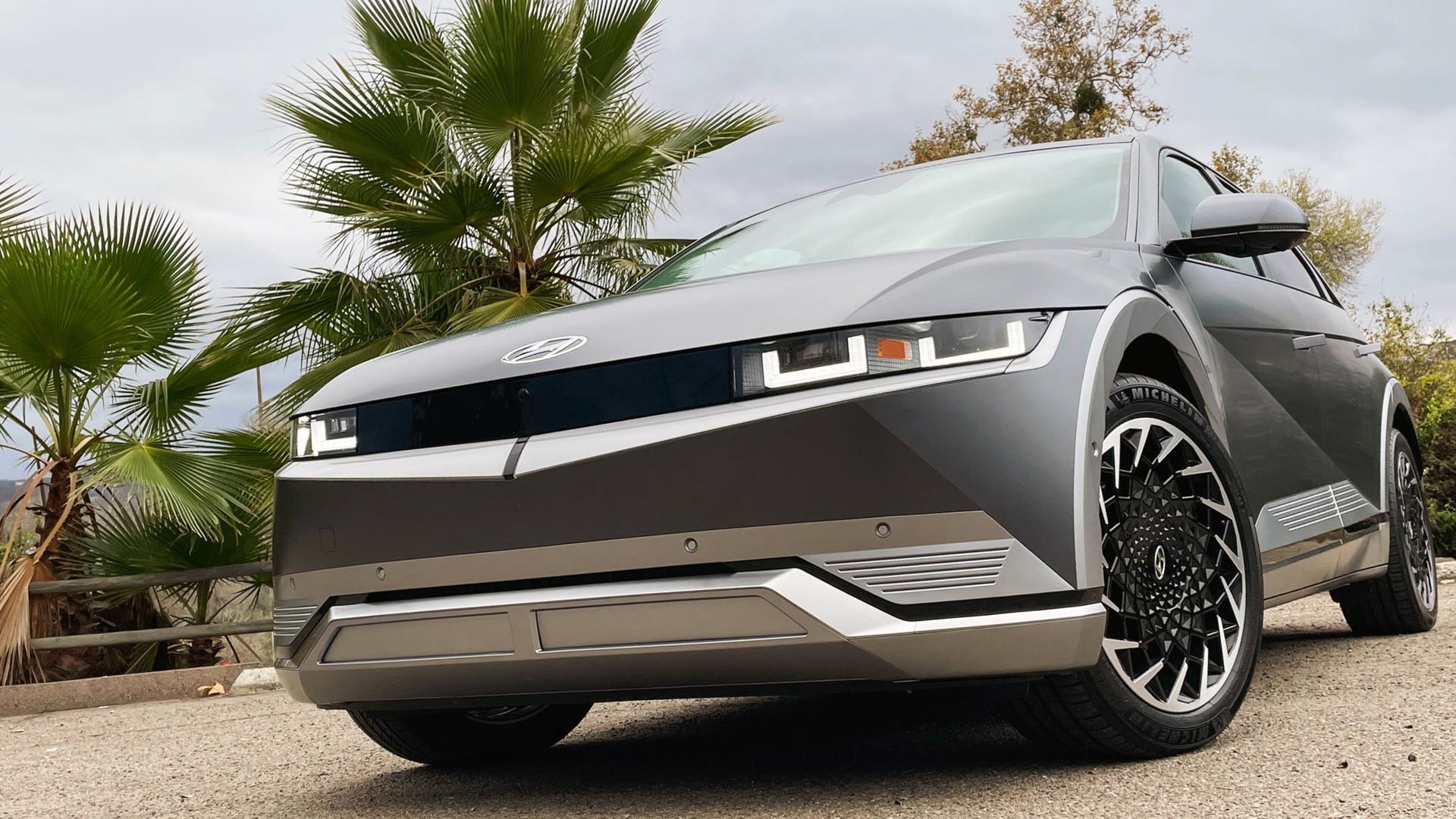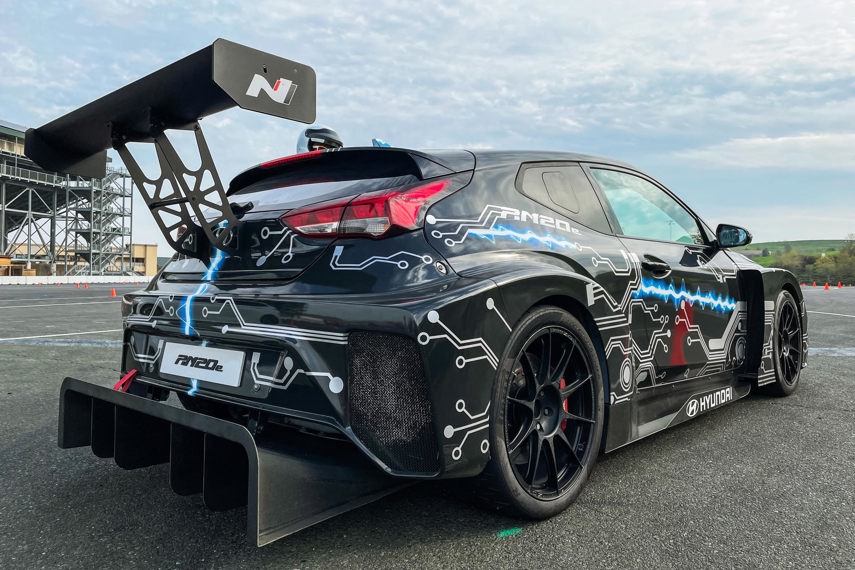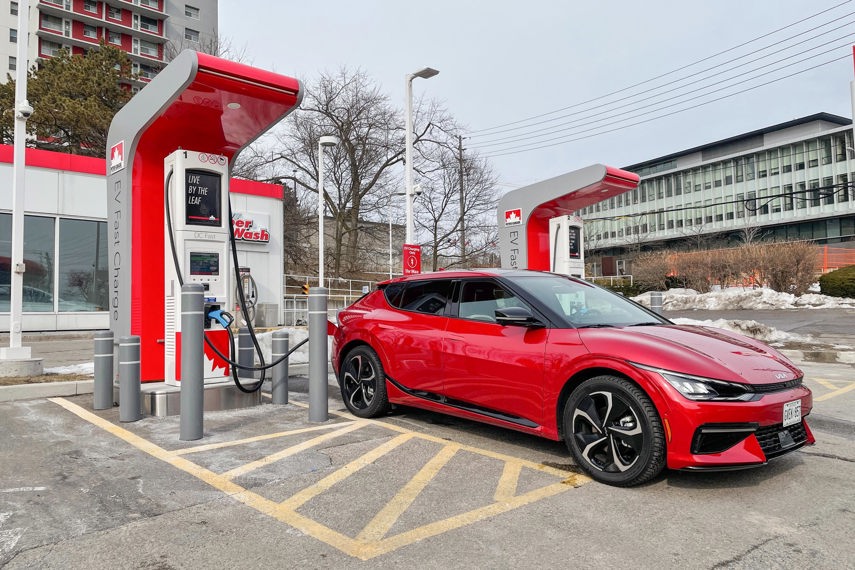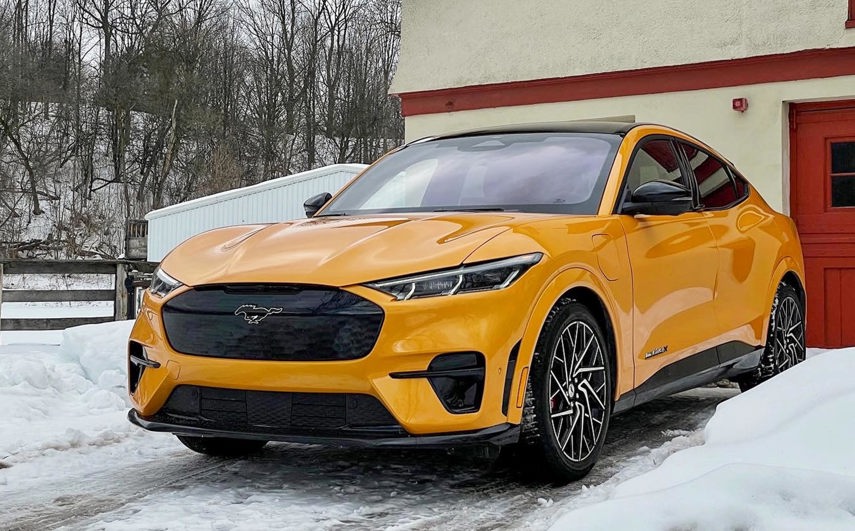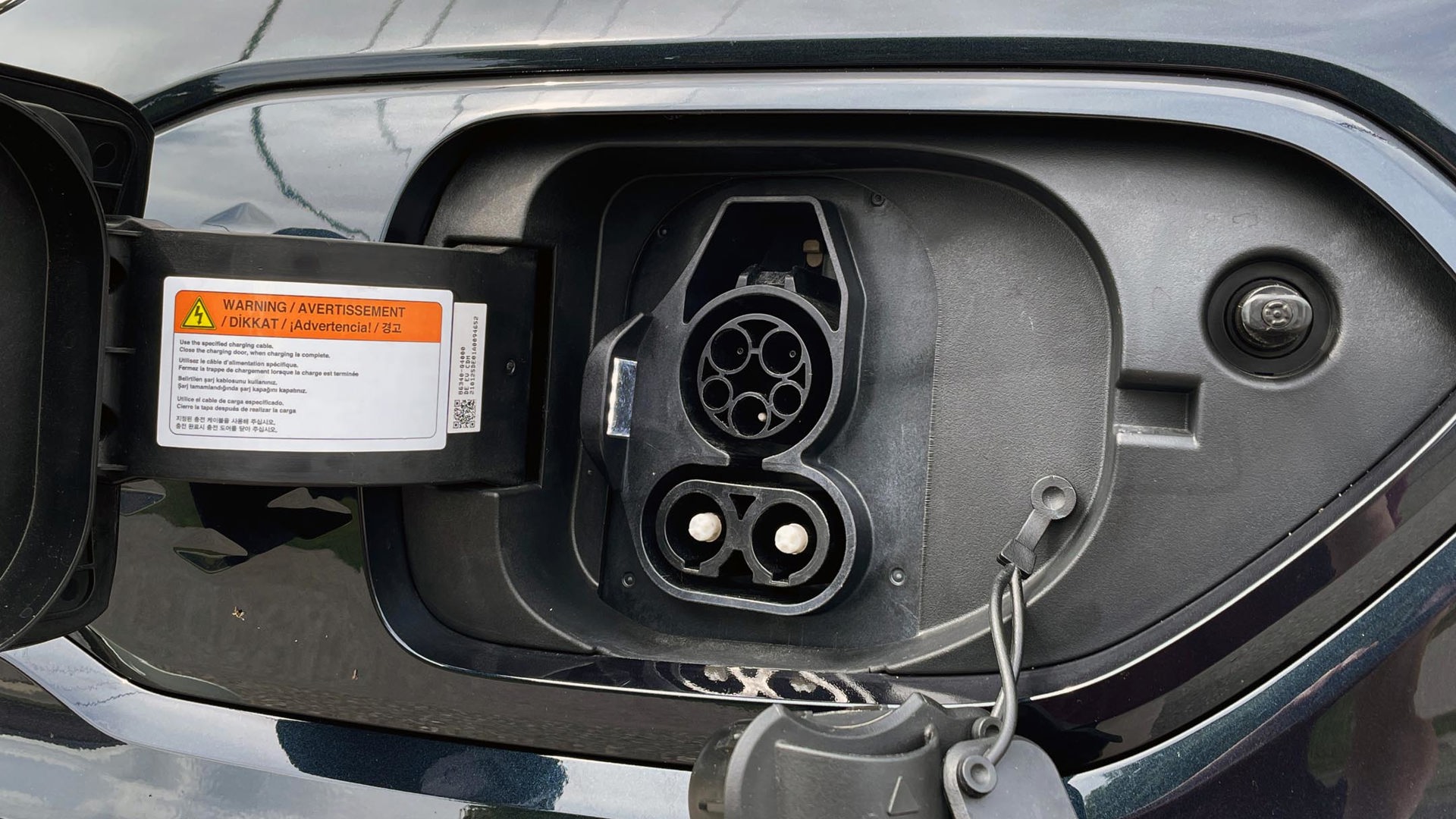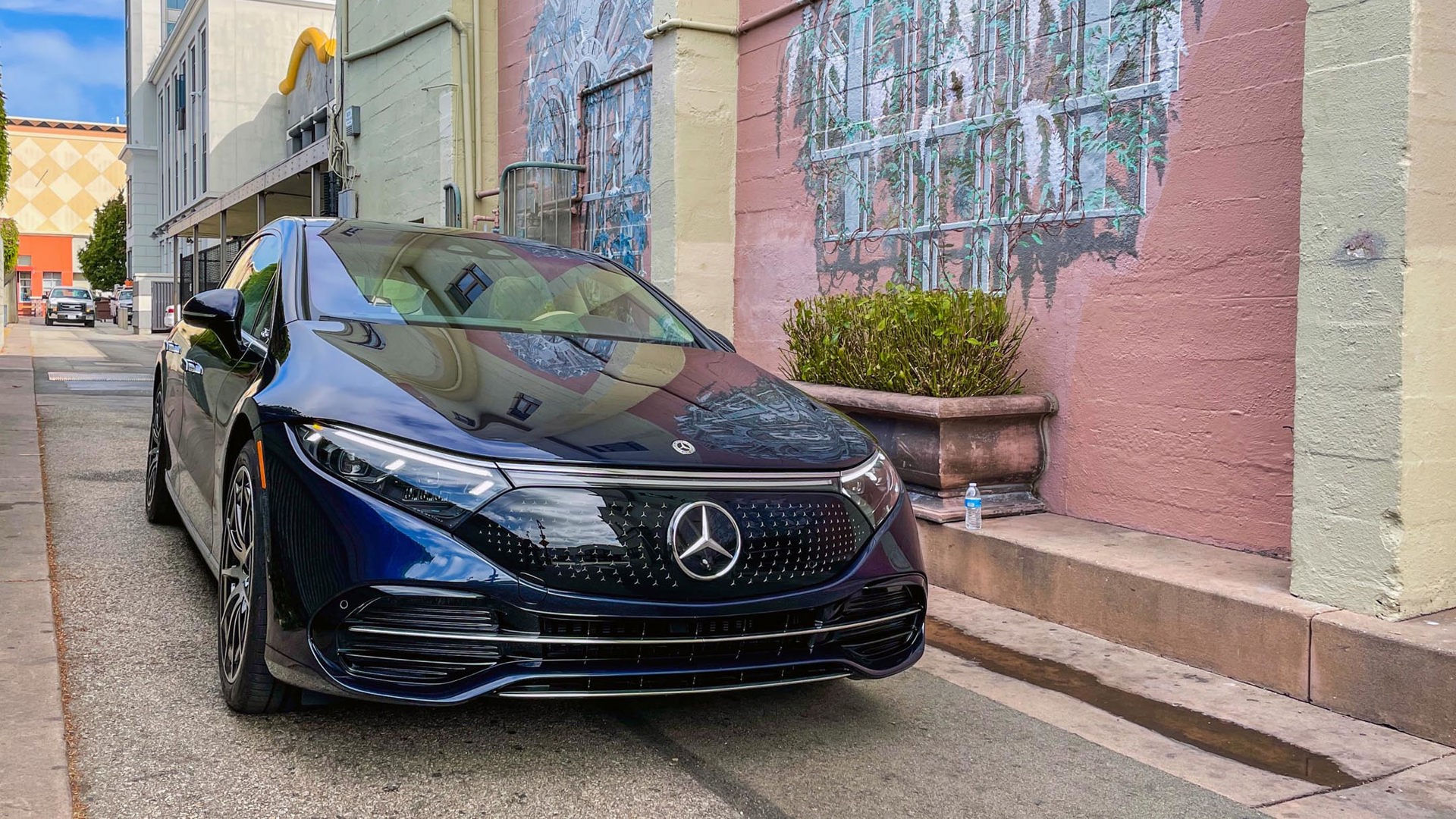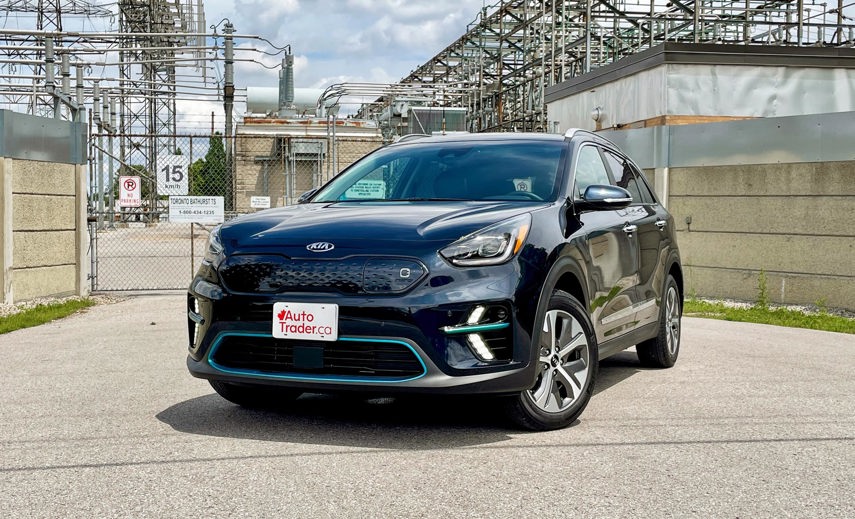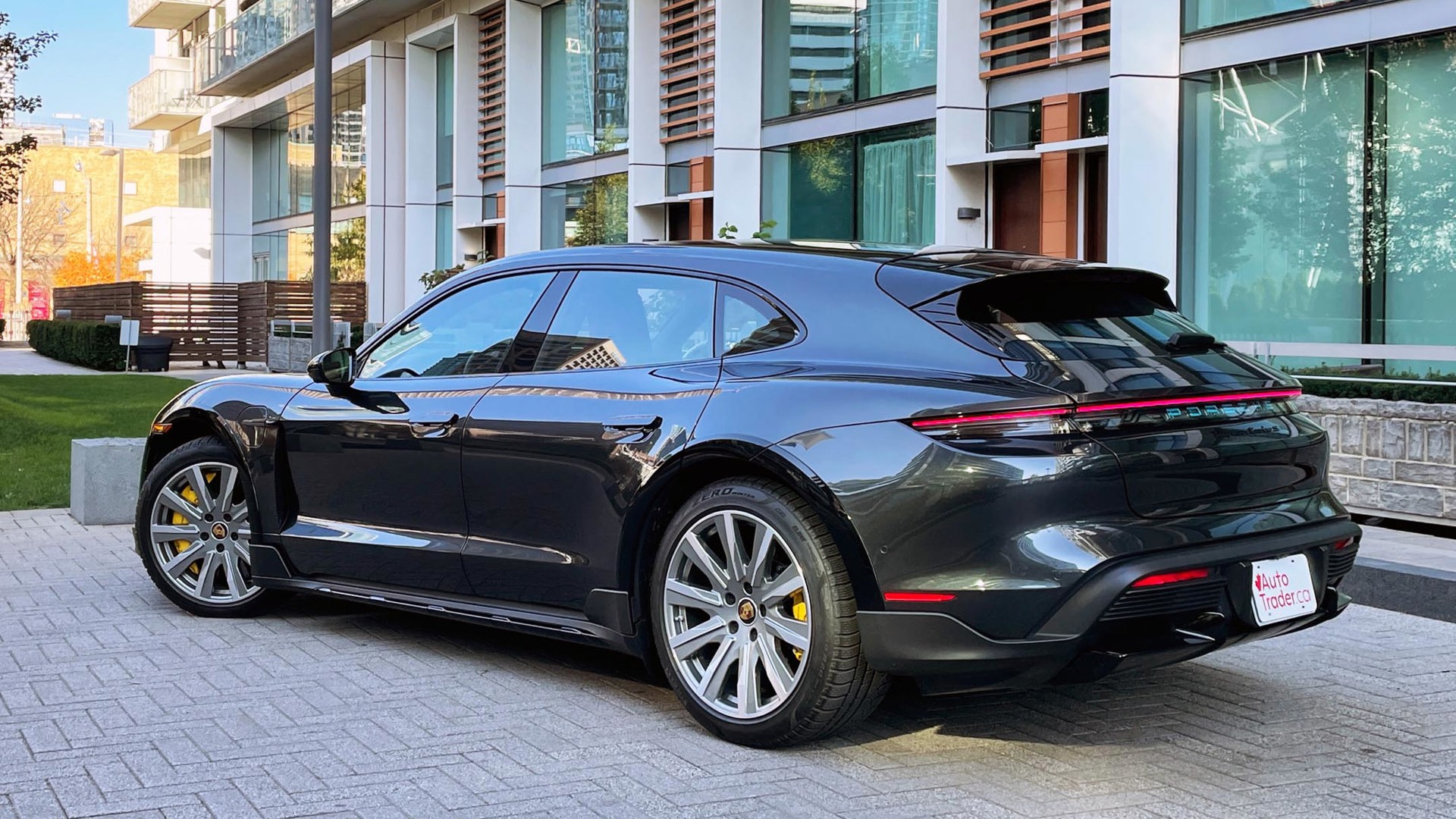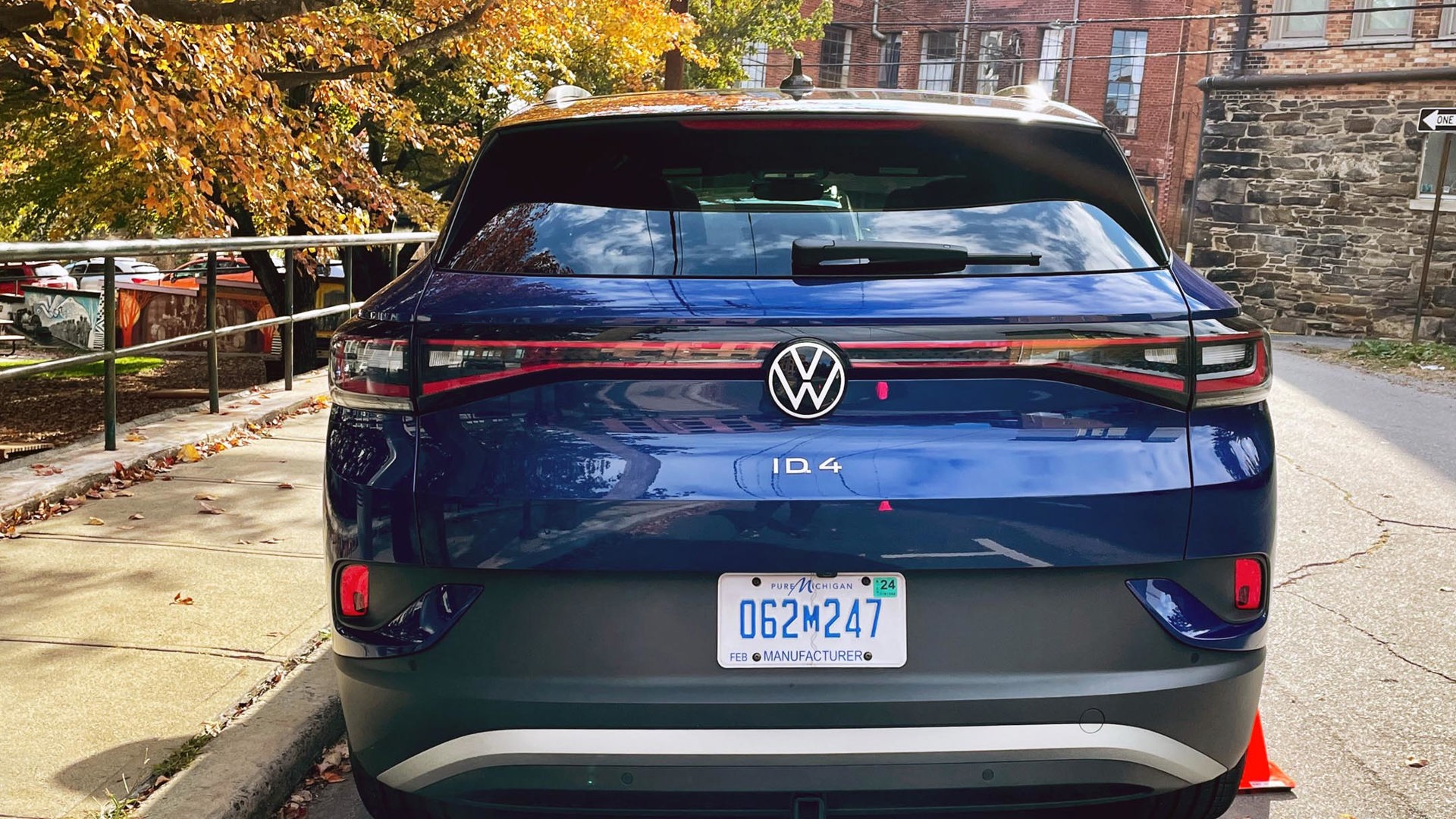Apologies in advance for yet another reminder, but gas prices have been out of control lately. The cost of petroleum is so high that perhaps you’ve been considering switching to an electric vehicle (EV). But what if you’ve never driven an EV before, don’t know much about them, and aren’t really sure what to expect?
Well, fret not because up until about a year ago, I had never driven an EV either. Since then, however, I’ve driven and experienced a large handful of electric-only rides ranging from the humble Kia Niro to the fabulously fast Porsche Taycan Turbo S Cross Turismo to the unapologetic off-road beast that is the new GMC Hummer EV.
To give you an idea of what to expect as an EV first-timer, I’ve compiled some key electric car impressions. Here are the top seven things I learned over the past year as an EV newbie.
1. They’re All Quite Quick, Even When They Aren’t
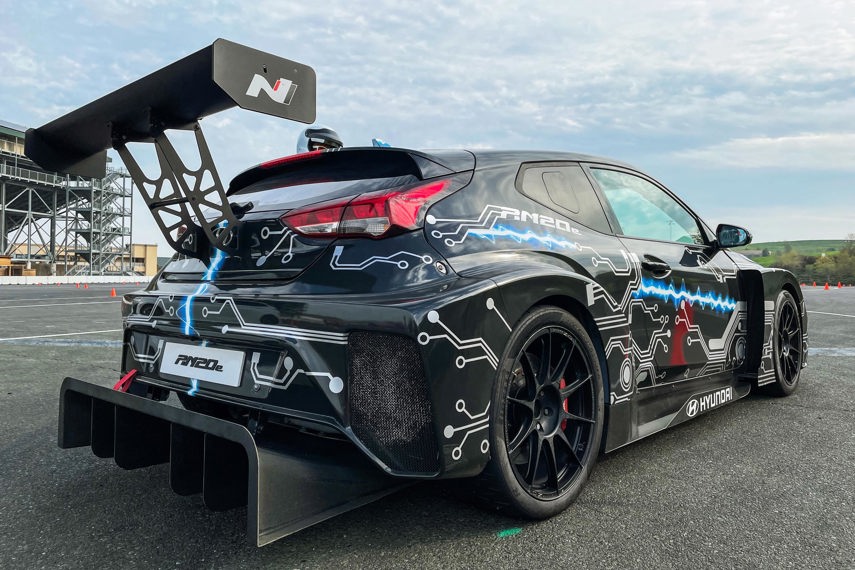
Anybody who’s seen reaction videos of (or perhaps experienced) Tesla’s famous Ludicrous Mode launch function will know that electric motors are no joke when it comes to neck-snapping acceleration. Of course, just like gas cars, there are different levels of performance, but it turns out, you don’t necessarily need a Plaid-level Tesla, a Turbo S-branded Porsche EV, or even Hyundai’s wild RM20e racing prototype to experience eye-opening electric speed.
The Ford Mustang Mach-E, for example, even in top GT Performance Edition guise, won’t be quite as alarmingly quick as the aforementioned Porsches or Teslas, but it’ll still get your blood pumping, getting from zero to 100 km/h in 3.7 seconds. Automakers haven’t discriminated by relegating tiny drag times to just the performance-oriented EVs or EVs from specific segments either because the four-tonne Hummer EV Pickup can hit 100 km/h in three seconds flat.
Even the EVs that aren’t objectively super quick – like, for example, the Kia Niro or Volkswagen ID.4 – tend to feel quicker than they are thanks to the smooth, instantaneous way electric motors build speed compared to the average internal combustion engine. There’s no gas to combust, no turbos to spool, no super-complicated transmissions for torque to travel through. They just go. It’s pretty sweet.
2. Public Charging Still Kind of Sucks
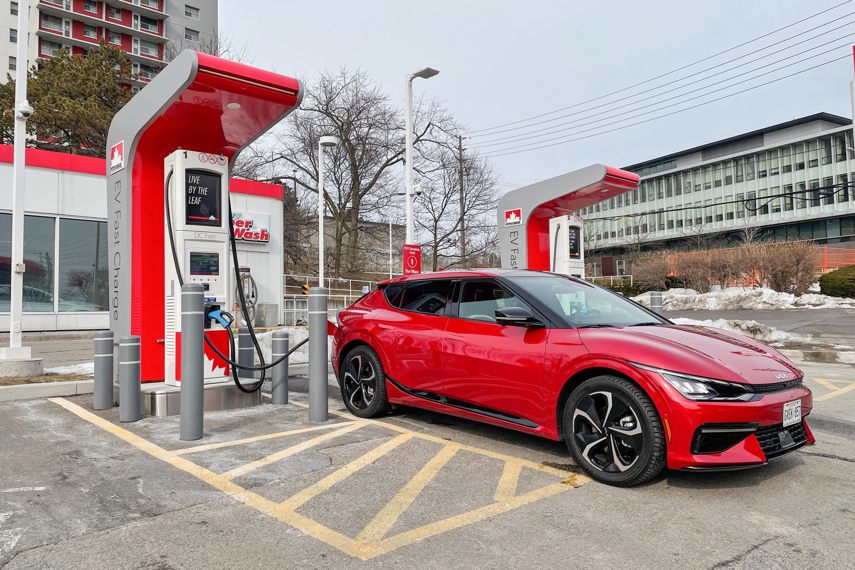
As fun as flooring it in an EV can be, I still can’t really recommend buying a non-Tesla electric car if you do not have a place to charge it at home overnight or at work during the day. Because unless you have access to convenient home charging or Tesla’s much more comprehensive Supercharger network, the public charging experience still needs plenty of work.
Most of this is down to the fact that there just aren’t that many fast chargers around at the moment; but even when you do find one, the experience is often subpar. They’re often located in out-of-the-way places where there just isn’t much to do – likely because the real estate was more affordable. Another by-product of this is the fact that these locations often don’t feel very safe, especially at night, and they’re not places I’d like to spend a lot of time sitting like a duck inside of an expensive car.
Another pet peeve of mine is the fact that most charging networks like ChargePoint and Flo require you to download, register, and load money onto their proprietary mobile app before you’re eligible to use their stations at all. Just give us credit card readers, like every modern gas station does. And then there are times when the chargers are simply not working or the app or station itself is having connection issues, and the customer service number on the charger is no help at all.
3. Range and Charge Times Are Way Worse in the Winter
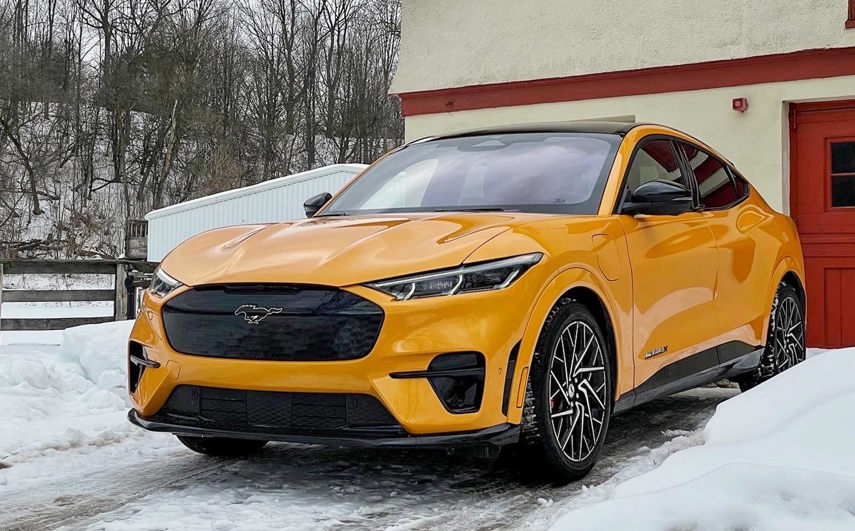
Two of the most vital stats of any EV are its projected driving range and charge time. Over the years as technology has progressed, the former has gotten bigger while the latter has gotten faster. That Ford Mustang Mach-E GT Performance, for example, is advertised to go 418 km on a full charge and be able to get from 10 to 80 per cent battery in just 45 minutes plugged into a DC fast charger.
However – and to be fair to the automakers, they often do point this out through plenty of asterisks – those ratings are observed in ideal conditions. Your driving style, payload, and use of auxiliary functions like climate control will affect range while environmental conditions like ambient temperature will affect both range and charge times. Case in point: When I plugged the Mach-E into a so-called DC fast charger during an early February night, merely getting from 58 to 80 per cent took 41 minutes, almost three times as long as it should have taken, inferring from the car’s ideal, advertised charge rate. And according to the car’s own range indicator, that 80 per cent was only good for a projected 220 km of range, just two-thirds what Ford says it should do in perfect conditions.
Quite taken aback by this, I asked Ford whether this is expected behaviour or whether there was something wrong with the car or the charger. After examining the car remotely, the company determined that there was indeed nothing wrong with the car and recommended that I charge after the car has been warmed up via the preconditioning function or after a longer drive or simply charging during the day, when it’s warmer. Translation: No, this is not out of the ordinary and merely the nature of the beast.
Subsequent daytime charges post-long drives were indeed quicker but still quite a ways off of what Ford advertises.
4. The Plug Situation Is Simpler Than It Sounds
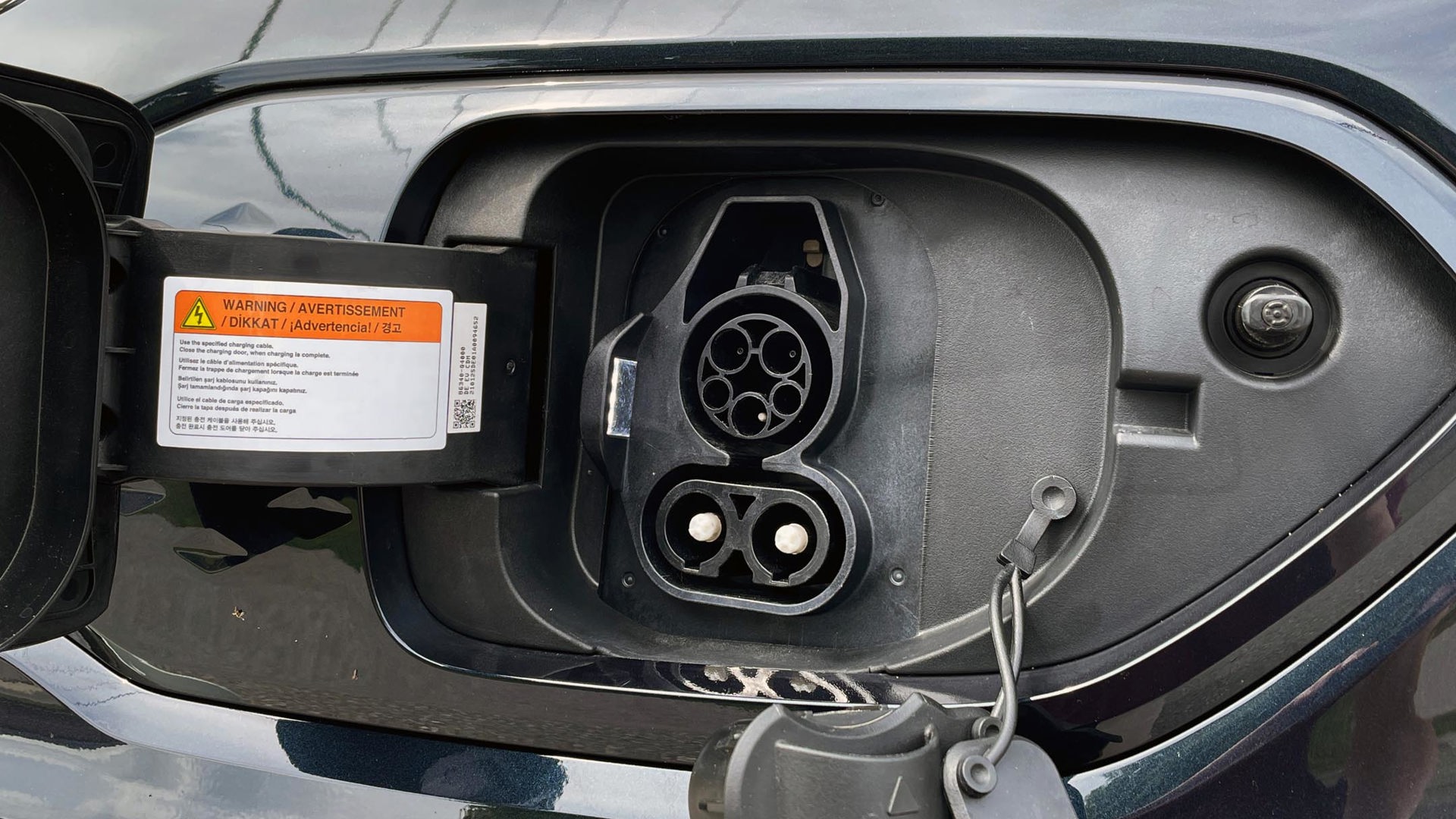
As another failing of whoever is in charge of labelling the technical aspects of EVs, the charge plug situation is a lot simpler than it can sound. When I first did research into the various types of EV charge plugs and their compatible ports, I came away more confused than I was going in. It’s all acronyms, numbers, and units of measurement I felt like I needed a degree in electrical engineering to really understand. Like CCS, J-1772, and CHAdeMO.
(How are they already at J-1772? What happened to J-1771? J-1770? And what is the significance of the weird capitalization situation in CHAdeMO? To be perfectly honest, I still do not know.)
Turns out, though, unless you’re buying a significantly older EV second-hand, I wouldn’t worry about any of that too much. Most new EVs use the same style of CCS charging port that will look like a circle on top of a straight-sided oval port. That lower oval will often have an additional cover on it that you’ll have to remove when using a DC fast charger – that is, the public chargers that will charge your EV the quickest and often utilize the chunkiest “pump.” When charging at home or on a slower Level 2 station, you only need to plug it into the circle at the top.
And that’s all you really need to know about the plugs. Trust me.
(Bonus round: Whichever engineer decided that the word “Level” plus a number would be used to describe both EV charging and semi-autonomous driving tech is an unimaginative sadist who clearly did not care about having to explain it all to average, everyday consumers.)
5. Highway Noises Are More Noticeable, Even in the Nice EVs
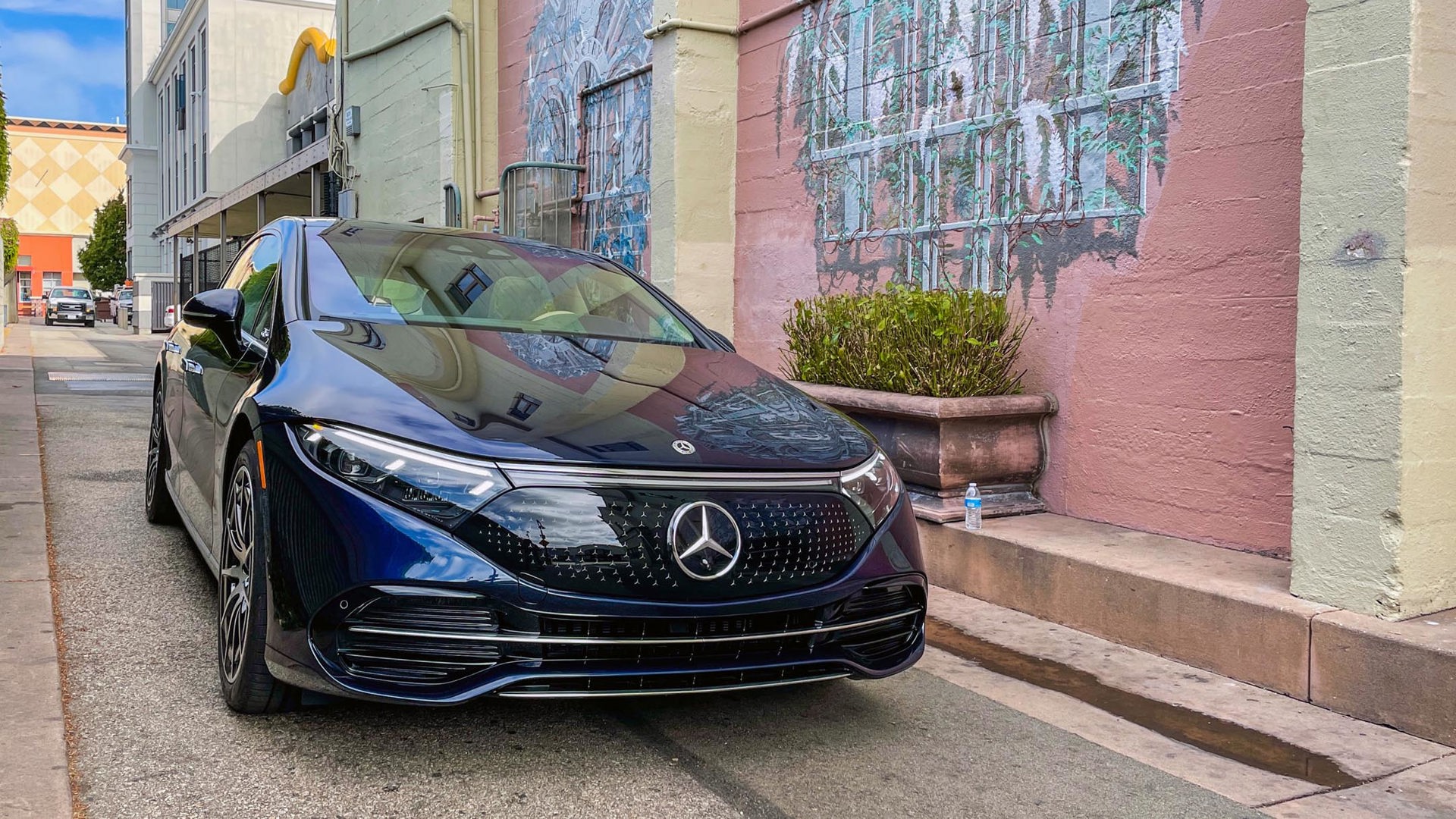
In addition to smooth acceleration and no tailpipe emissions, another significant aspect of the EV driving experience is the noise, or lack thereof. Without a gas engine, EVs are indeed much quieter than a comparable internal combustion engine (ICE) car but the lack of that internal combustion hum means wind and road noise is a lot more noticeable, especially on the highway. Without thousands of tiny explosions drowning them out, the sound of air hitting and passing over the car and the noise of tires rolling on tarmac becomes much more apparent.
This is true even in the really luxurious EVs, like, for example, the Mercedes-Benz EQS. Despite its ultra-aerodynamic shape and status as the “electric S-Class,” road and wind noise was much louder than expected. The absolute wind-and-road-noise king, however, would be the staunchly un-aerodynamic and noisy-tired Hummer EV but something tells me this would be the case even if it weren’t an EV.
Compared apples to apples, electric cars are still likely quieter inside overall than their gas-powered counterparts but don’t expect to sit in absolute silence at 100 km/h.
6. Around Town, Most of Them Artificially Sound Different
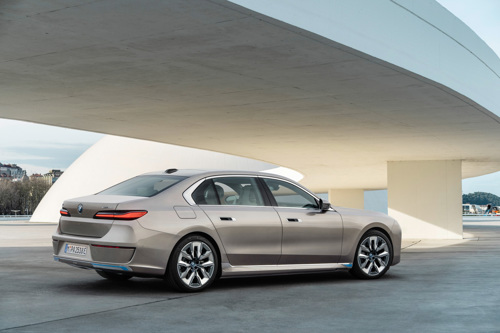
For those who prefer to have some aural feedback behind the wheel, though, automakers have made a habit of including artificial motor-like noises pumped through the speakers. And just like gas engines, they all sound different. The Mustang Mach-E GT, for example, responds to stabs of the throttle with an appropriately muscle car-esque thrum while the Taycan features time machine-like noises as it builds speed.
Some of these are even configurable. The EQS and Kia EV6, for example, offer multiple sound profiles to choose from, with the latter letting you customize the specific tone and the way in which it responds to the accelerator. BMW has even hired award-winning movie composer Hans Zimmer to come up with its EV noises, giving the i7 prototype some inadvertent Batmobile pedigree.
And for the most part, I kind of dig it. With fewer nuances between them in terms of throttle response, power delivery, and transmission behaviour, the manufactured audio gives each EV their own, much needed character. No, they do not replace (nor do they aim to mimic) the atmospheric sounds of, say, a nice V8, but they instead sound like The Future, making drives feel that much more novel.
Unlike the sound of a gas engine, most of these pre-programmed EV sounds can be turned off.
7. Every EV Does One-Pedal Driving Slightly Differently
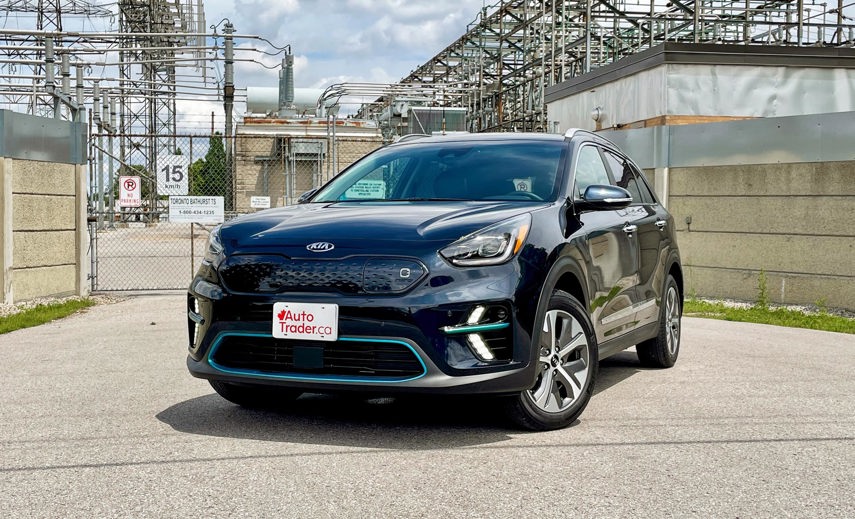
Another hallmark of the EV driving experience is that there’s usually some sort of one-pedal driving mode. Having this feature activated will use the regenerative friction braking to slow the car down any time your foot comes off of the accelerator, allowing you to drive without using the brake pedal. Regenerative braking, by the way, slows the car down via magnetic resistance within the electric motors themselves, which is said to recuperate more energy for the battery than traditional caliper-on-disc braking.
One-pedal driving is definitely a newfangled experience the first time you try it and helps make EVs even more fun, giving them an overgrown golf cart vibe. Just like windshield wiper controls, though, every automaker seems to implement it slightly differently. Many allow you to adjust the strength of the regen with paddles behind the steering wheel (i.e. the same paddles that would be used to change gears in a gas car) with three regen levels and a regen-less fourth setting seeming to be the default setup. Others only have an on or off setting for regenerative braking with no other customizations available.
Some, meanwhile – like the Porsche Taycan – don’t really allow for one-pedal driving at all, while others such as the Mercedes EQS have even implemented an intelligent regen setting that automatically adjusts braking strength via the car’s adaptive cruise control system and GPS, making the act of driving way simpler. The Hyundai Ioniq 5 / Kia EV6 twins feature a simplified version of intelligent regen.
Each and every automaker seems to have a different philosophy when it comes to single-pedal driving and, in my experience and conversations with industry folks, so does each driver. Some love it, some find it awkward, but it’s definitely something to play around with when shopping for an EV of your own.
